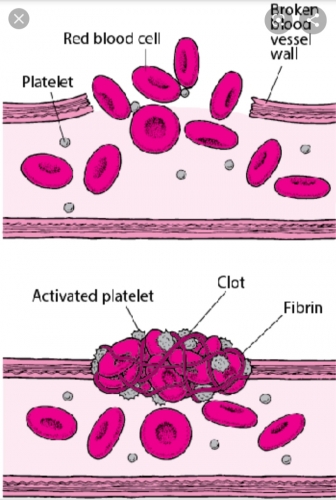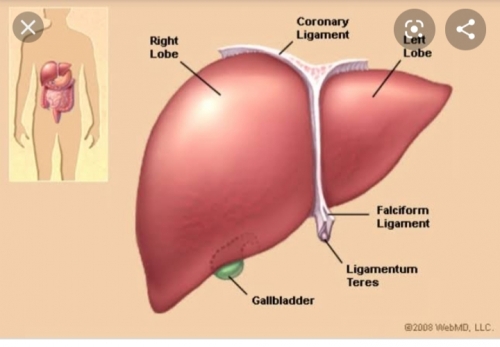profile/7524IMG_20200418_233354_588.jpg
Adaora10

Blood Clotting
~1.0 mins read
Blood clotting, or coagulation, is an important process that prevents excessive bleeding when a blood vessel is injured. Platelets (a type of blood cell) and proteins in your plasma (the liquid part of blood) work together to stop the bleeding by forming aclot over the injury.
Process of blodd Clotting
When a blood vessel is damaged and exposed to air, platelets in the blood stream release an enzyme, thrombokinase, which then converts prothrombin to an enzyme called thrombin. The thrombin converts soluble fibrinogen in the plasma to insoluble fibrin in the presence of calcium ions. The fibrin forms a network or mesh on the surface of the wound and blood cells are tracked. The clot dries to scab ober the wound.
Importance of blood clotting
*It prevents loss of more blood from the body.
* It ensures healing of the wound.
*It prevents harmful microorganisms from entering the body.
profile/7524IMG_20200418_233354_588.jpg
Adaora10

Liver
~0.7 mins read
The liver is the largest organ in the body of a mammal. It weighs about 1.5kg. The liver lies below the diaphragm and is located on the right side of the abdomen. The liver is dark red in colour and is divided into lobes. The liver secretes the bile which emulsifies fats. The liver is able to control major metabolic activities within the body.
Functions of the Liver.
*Regulation of blood sugar.
*Detoxification.
*Regulation of blood protein.
*Production of bile.
*Formation of red blood cells.
*Production of heat.
*Regulation of lipids.
*Manufacture of essential proteins.
*The liver is responsible for the breakdown of worn out red blood cells in adults.
*Storage of Vitamins.
*Storage of iron.
*Reservoir of blood.
Diseases of the Liver
*Infective hepatitis.
*Amoebic Liver abscess.
*Gall Stones.
*Diabetes Mellitus.
*Cancer of the liver.
*Cirrhosis.
Advertisement

Link socials
Matches
Loading...
